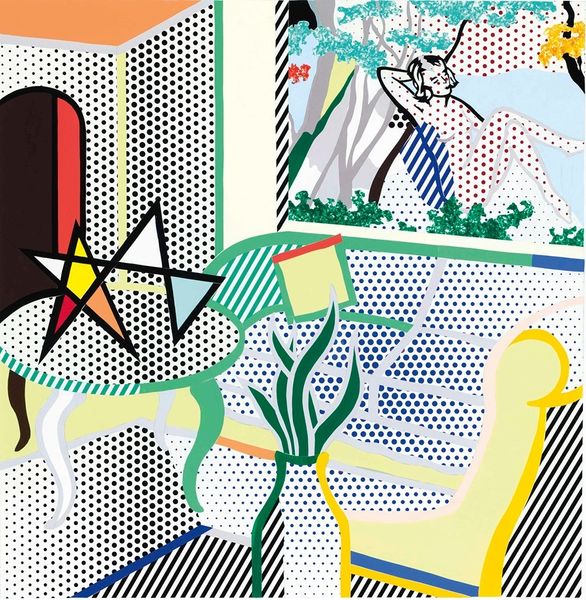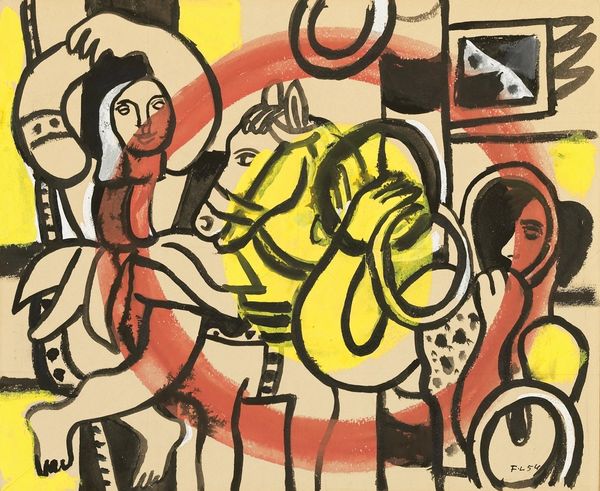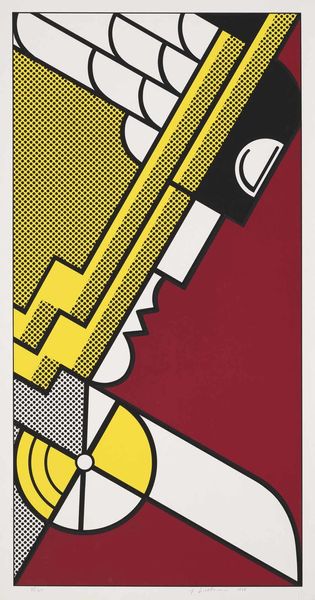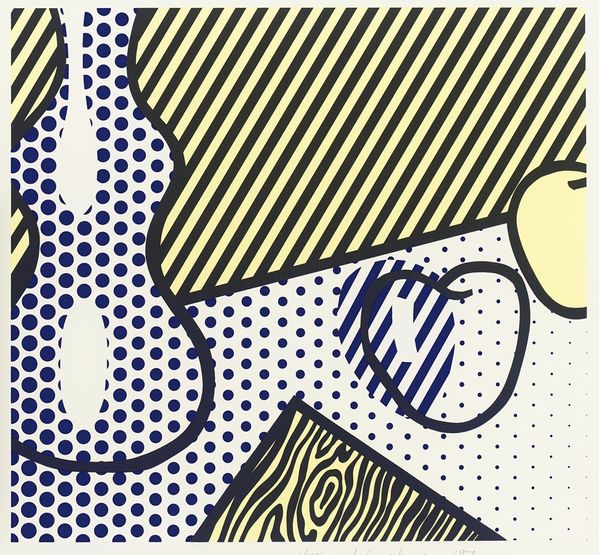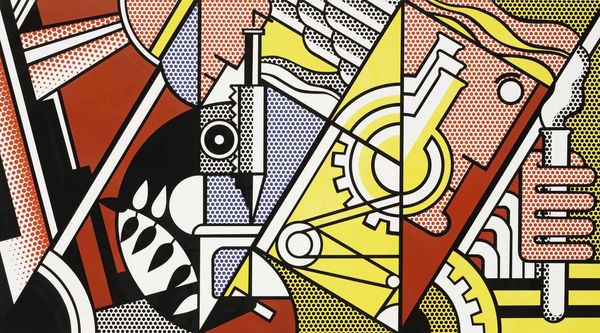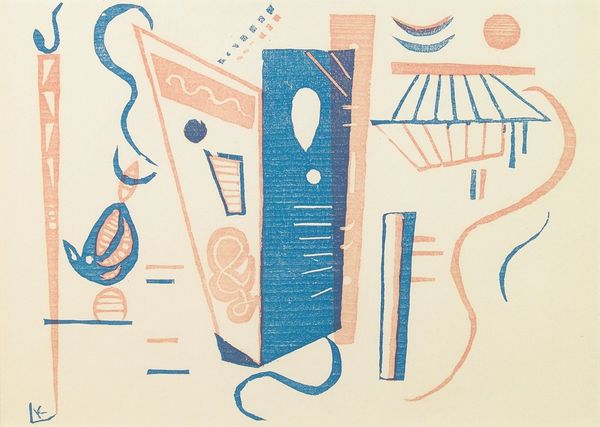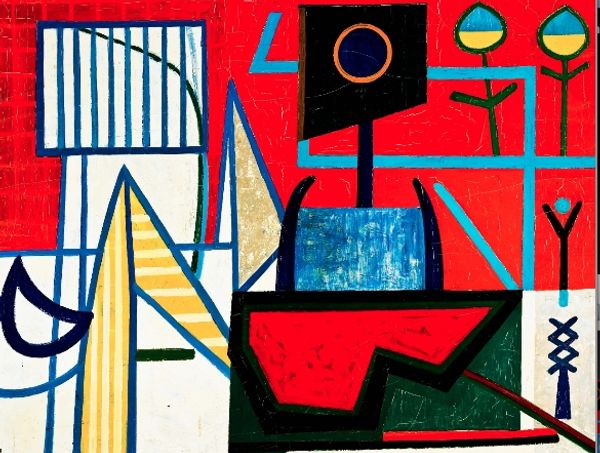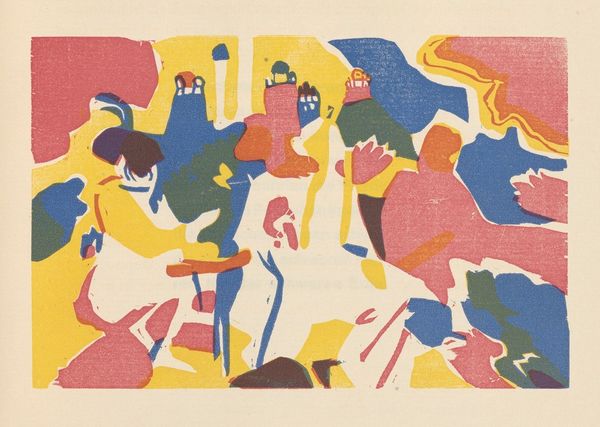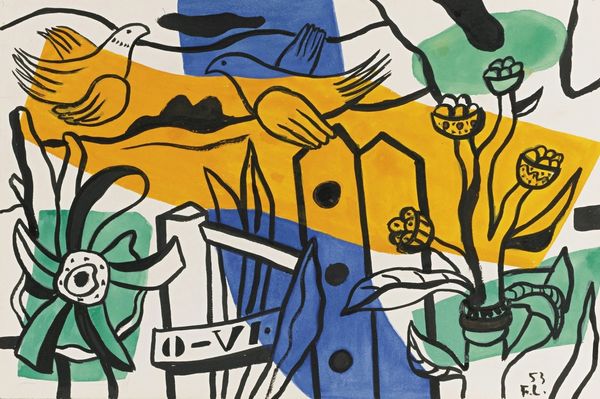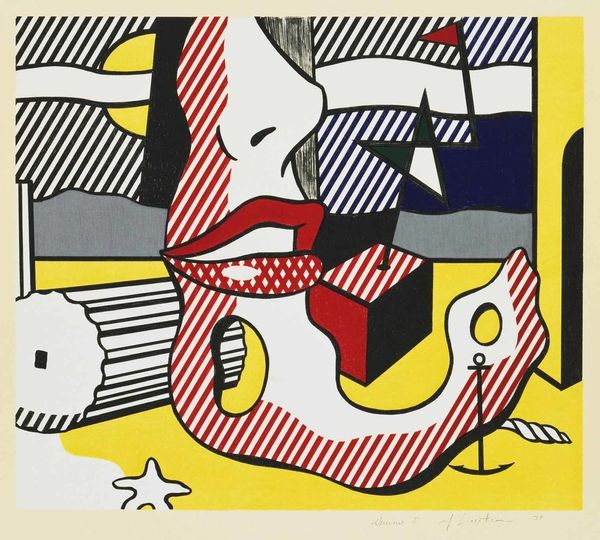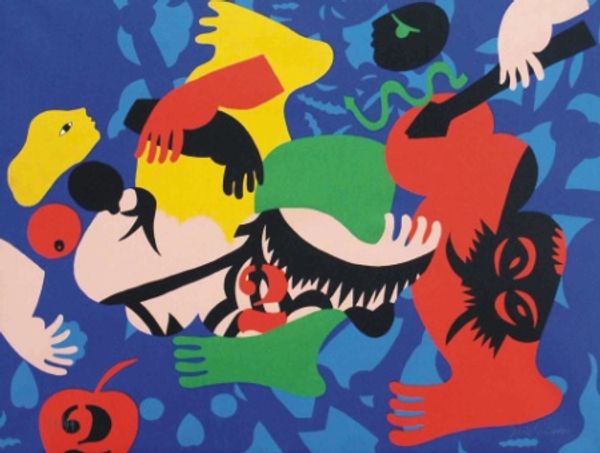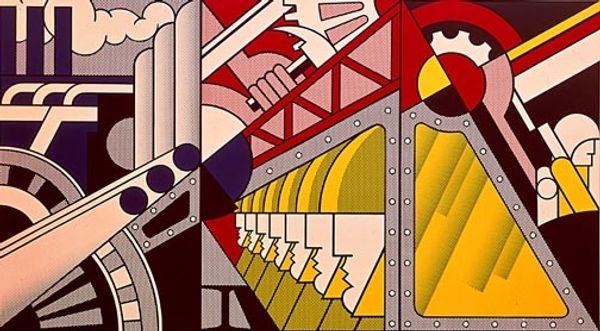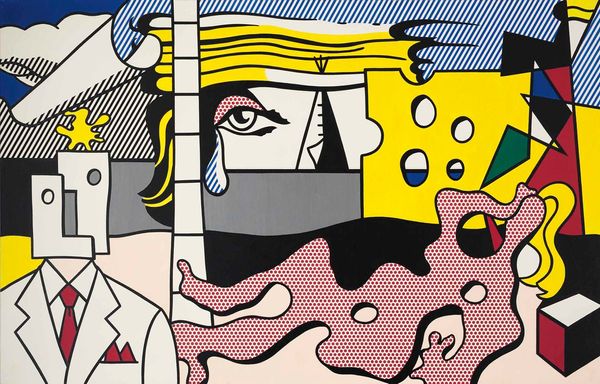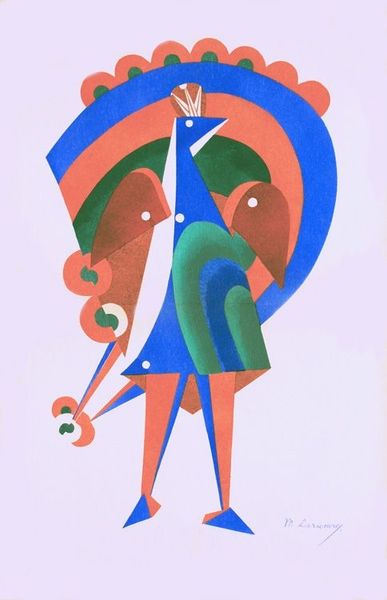
screenprint, print
#
portrait
#
screenprint
# print
#
pop art
#
figuration
#
pop-art
Copyright: Modern Artists: Artvee
Curator: Standing before us, we have Roy Lichtenstein's screenprint from 1967, a striking example of Pop Art, aptly titled "Modern Art Poster." Editor: My first impression? Bold. Flat. A powerful graphic statement shouting from the wall. Primary colours always get my attention, that much is true. Curator: It’s deceptively simple, isn't it? But that’s Pop Art's trick. The Benday dots, the strong outlines... it’s like Lichtenstein zoomed in on a comic book frame and blew it up, made it art. Editor: Absolutely, but Lichtenstein does more than simply reproduce comic book aesthetics. There's a certain deconstruction at play. I see the classical elements: the Greek column fragment, a suggestion of an idealized face. It is, if I may, an assembly of the idea of "art". Curator: Precisely! It's not a copy of a classical statue. Lichtenstein filters it all through his signature Pop Art lens. Is it a knowing nod or is it a subtle commentary on the commodification of high art? It makes you wonder, doesn't it? It almost mocks high brow pretensions through it's style and title...Modern ART, no less. Editor: Everything from the colour choices to the rendering are deliberate statements; the imagery, once revered and laden with symbolism, now appears flattened, accessible to all. This artwork forces the observer to rethink the established hierarchy. Curator: Do you think the reduction also democratizes it? By flattening it, by making it almost mass producible, does he then level the playing field in terms of appreciating art? Does the aesthetic actually encourage greater familiarity or appreciation because of the familiarity? Editor: Perhaps. The real genius might lie in making us question what is valuable about both the original and the copy. It also manages to feel very much *of its time*, like an image ripped from a contemporary magazine, Curator: A visual signifier of the times, as I would argue that he invites us to ponder the place of modern art and invites our perspectives to fill those empty spaces, but one wonders whether it truly reflects the spirit and intent, which ultimately renders any sort of ultimate understanding forever unreachable and unique to the moment, as art always is. Editor: I leave with my mind filled with ideas! Every dot and line in the painting now prompts endless, delicious questions on beauty and art, not only as reflections of the real, but its commodification in our very modern present.
Comments
No comments
Be the first to comment and join the conversation on the ultimate creative platform.
